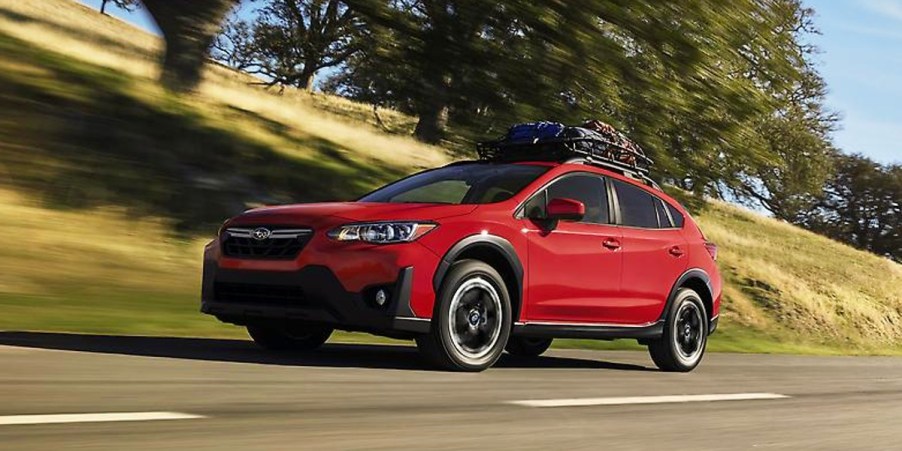
Does the Success of the Subaru Crosstrek Prove Honda Made a Big Mistake a Few Years Ago?
The Subaru Crosstrek is one of the best-selling vehicles of 2023 thanks to its compact economy and off-road inspired design. The model’s success lies in contrast to Honda’s attempt at a compact crossover SUV, the Honda Element. The Element was discontinued after low sales, but has since found an audience as a cult favorite. Its resurgence and the popularity of the Crosstrek and other crossovers suggest that the Element could’ve been a hit with just a few changes.
What makes the Subaru Crosstrek such a popular choice?
GoodCarBadCar recently posted the statistics for auto sales in the United States through June 2023 and compared their results to their performance in 2022. All of the numbers come to the same conclusion: the Crosstrek customer base is only getting bigger over time.
In the first quarter of 2023, Subaru sold 41,562 units, about 4,000 more than the 37,463 in the first quarter of 2022. In the last year-to-date, 62,328 Crosstreks were purchased, a 4.98% increase on the preceding year.
So what makes this SUV so attractive to buyers? Across each of the Crosstrek’s five trim levels, it provides off-road capability and efficient fuel economy at a reasonable price.
The Crosstrek includes a lifted suspension with 8.7 inches of ground clearance and all-wheel drive as standard features across all models. There isn’t a Wilderness trim like on the Subaru Outback or Forester, but these specs are enough for most situations.
The base Crosstrek model comes with a 2.0-liter four-cylinder engine and 25 mpg combined and a number of driver-assisting technologies to keep you and other passengers safe, all for the lowest price of all Subaru models at $23,645. No wonder upper trims are considered to offer better value for money than their competitors.
Honda released their own crossover two decades ago
Honda released a crossover with some resemblance to the Crosstrek back in 2003. The Honda Element first drew attention for its boxy frame that wasn’t used by any other Honda model. According to Auto Influence, the aesthetic was meant to evoke a lifeguard station and the curved rooftop is supposed to look like a surfboard.
The vehicle was designed to appeal to younger, adventurous drivers. Customization was the Element’s main draw. The back seats could be folded down flat to create a functional bed or create more room when needed. The maximum amount of cargo space is 74.6 cu-ft. They could also be pushed up on the sides of the cargo area. The two-part trunk included a top section that popped upward like a standard SUV and a fold-out tailgate you’d typically see in a truck.
Some models came with a manual sunroof, and drivers could choose between front-wheel drive or a real-time four-wheel drive.
Unfortunately for Honda, those features appealed to a different demographic than they expected. The Element was mostly bought by adults over the age of 35. In hindsight, that was the first sign that the marketing plan for the SUV was not working as intended.
Why did the Element fail to find a fan base while in production?
Honda consistently tweaked the Element with new details and trim levels, but the SUV struggled to gain traction in the market. One of its main obstacles was Honda’s own CR-V, which had better fuel economy and had space for an extra passenger. After selling only 325,000 units, the Element was discontinued in 2011.
But in the years since it went out of production, the SUV has become a cult favorite with a passionate following. Modern drivers finally see the Element’s utility as a camping vehicle or other examples of an active lifestyle like biking or surfing trips.
The biparting front and rear doors make it more straightforward for delivery workers, service people, and artists to unload large cargo. The roomy interior is also useful for parents and dog owners.
The Element handles well, is very reliable, and is easy to clean thanks to its stain-resistant upholstery and industrial-grade urethane flooring.
The model was succeeded by the second-generation HR-V in 2013. The compact SUV is sleeker, more fuel-efficient, and has more passenger seats, but isn’t as powerful as the Element. The two vehicles still hold one similarity: both can’t live up to the sales of the CR-V.


